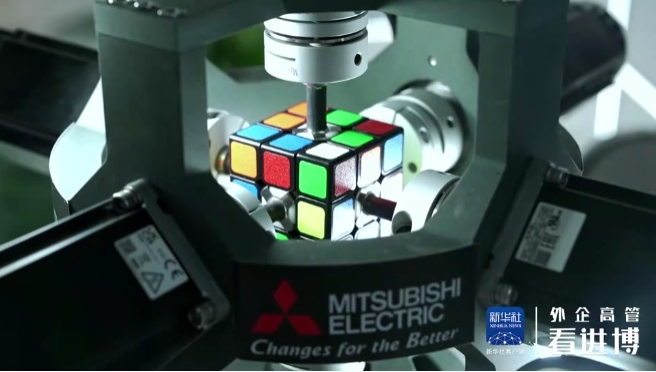General Motors, racing to bring hybrid vehicles to market faster, is turning to simulation to lop weeks off the time required to design and develop software control systems for hybrid powertrains.
And it goes beyond hybrids. GM is using technology known as model-based design from MathWorks Inc., of Natick, Mass., to develop software control systems for all new GM powertrains around the world.
This software, called Simulink, allows GM to simulate the control system for any GM powertrain before committing to the hardware.
"I don't think you could do a hybrid control system without model-based design and development," said Kent Helfrich, director of software engineering in GM Powertrain. Hybrid powertrains are far more complex than those built around internal combustion engines and require sophisticated software controls.
Hybrid integration
"The name of the game in hybrid systems is integration," Helfrich told Automotive News. "You can't make an engine and a transmission separately anymore and then integrate them at the last minute. This has to be conceptualized as a family, as a system. If the system isn't conceptualized well, your end product's not going to work very well."
The automaker used MathWorks tools to design and develop its Two Mode hybrid powertrain control system launched in January on the GMC Yukon and Chevrolet Tahoe SUVs.
The Two Mode hybrid control system was done entirely in model-based design, Helfrich said.
"That really enabled engineers to do what they needed to do to ensure that the system actually worked, prior to even having hardware available," he said.
GM is reducing costs and taking weeks out of the development time of control systems for hybrid powertrains, he said. The automaker also is shortening its cycle time on design changes without affecting quality, he said.
"We can now do those iterations virtually, and then commit ourselves to hardware later in the design center," Helfrich said. "It saved us a lot of money in terms of eliminated prototypes and rework."
Helfrich declined to quantify the cost and time savings. "It's hard to quantify things that you didn't do," he said. "But we couldn't do it without this. So it's not really a cost avoidance in that it is the only way to achieve what we need to achieve in our integrated powertrain controls."
Chain of tools
GM is using the same model-based design in engineering centers around the world, he said.
"The key is having one tool chain and one software product line globally for all of GM powertrain engineering," Helfrich said. "That's kind of unusual."
Just as automakers build a variety of vehicle models on a single platform, Helfrich's team is making those same types of design and architecture choices at a software level, said Jon Friedman, manager of aerospace, defense and automotive industry marketing at MathWorks.
MathWorks' competitors in the market for control system design software tools include Wind River Systems Inc., of Alameda, Calif.; and Mentor Graphics Corp., of Wilsonville, Ore.
GM also has powertrain control systems that were developed before the availability of model-based design. "That means we've got an interesting combination of old software and new software coexisting," Helfrich said.
"But it's good because the old software's validated and high-quality and is in use in millions of vehicles worldwide. We don't want to replace that unless we absolutely have to."
Companies such as Toyota Motor Corp., Denso Corp. and Delphi Corp. also use MathWorks tools to provide a common platform for sharing system specifications and development ideas.
参考译文:
通用汽车——在尽力以更快的速度将混合动力汽车推向市场——正转变为采用模拟仿真的方式去设计和开发混合动力的软件控制系统,而这种方式可以节约数周的时间。
它所做的已经超越了混合动力汽车。通用汽车公司正在使用的技术被称为基于模型的设计,使用的是马萨诸塞州的纳提克的MathWorks,主要用于为世界各地所有新的通用汽车的传动系统开发软件控制系统。
这个叫做Simulink的软件,使得通用汽车能够在交付给硬件之前模拟任何通用动力总成的控制系统。
“我认为如果没有基于模型的设计和开发,你就无法开发出一套混合动力控制系统,”通用汽车动力总成软件工程部门的主任Kent Helfrich说。混合动力系统远比那些围绕着内燃机的建造和需要复杂的软件控制的系统复杂得多。
混合动力系统的整合
“混合动力系统的实质是整合,”Helfrich告诉Automotive News。“你不能再把引擎和传动分开,然后让他们在最后一分钟进行整合。这个概念可以被称为一个家庭,或一个系统。如果这一系统没有被很好的概念化,那么你的最终产品也不会运行的很好。”
汽车制造商使用MathWorks工具来设计和开发的两种模式混合动力控制系统在1月首先发布于GMC Yukon和雪佛兰Tahoe的SUV上。
“这两种模式的混合控制系统是完全基于模型的设计,”Helfrich说。
“这真的使工程师能够做他们需要做的,以确保在硬件可用之前系统实际处于工作中,”他说。
“通用汽车正在降低成本,并考虑缩短数周的混合动力控制系统的开发时间,”他说,“在不影响质量的前提下,公司还正在缩短设计变更的周期。”
“现在我们可以在虚拟的条件下做这些反复的工作,然后在设计中心将其提供给硬件,”Helfrich说。“由于消除了原型车和返工,它使我们节省了大量的资金。”
Helfrich拒绝量化节省的成本和时间。“很难量化那些你没有做的东西,”他说。“但是没有这个(系统)我们就无法做了。它不是真正的为了避免产生成本,而是因为它是实现动力总成控制的整合的唯一途径。”
“通用汽车在世界各地的工程中心都在使用相同的基于模型的设计。”他说。
“对于所有的通用汽车动力工程而言,关键是有一个工具链和一个覆盖全球的软件产品线,” Helfrich说。“这是与众不同的。”
“正如汽车制造商在单一平台上建立了各种车型一样,Helfrich的团队也是在软件级别对这些相同类型的设计和建筑进行选择。”MathWorks的航空航天、国防和汽车工业部门的营销经理Jon Friedman说。
MathWorks公司在控制系统设计软件工具市场上的竞争对手,包括加利福尼亚州阿拉米达的风河系统公司和俄勒冈州威尔逊的Mentor Graphics公司。
通用汽车公司在基于模型的设计实用之前,也开发过动力总成控制系统。“这意味着我们将使用一个有趣的旧软件和新软件共存的组合。” Helfrich说。
“但是这很好,因为旧的软件仍然有效还有很高的质量,并且正在世界各地数以百万计的车辆中使用。我们不想取代它,除非我们不得不这样做。”
像丰田汽车、日本电装和德尔福这样的公司也使用MathWorks工具,从而提供了一个共同的平台用来共享系统规范和发展思路。
(转载)





